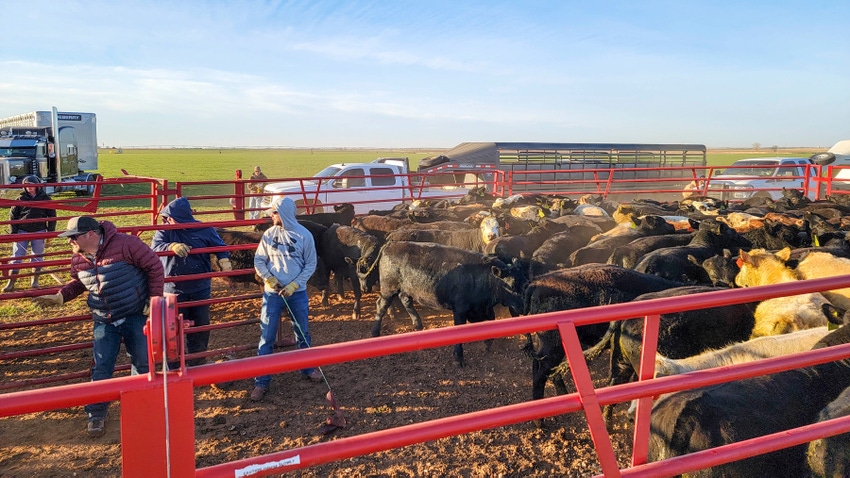Strategic Partnerships for Durability: Bagley Risk Management
Wiki Article
Comprehending Livestock Danger Protection (LRP) Insurance Coverage: A Comprehensive Overview
Browsing the realm of livestock risk protection (LRP) insurance coverage can be a complex undertaking for many in the farming market. This sort of insurance coverage uses a safeguard against market variations and unexpected situations that could impact animals producers. By recognizing the details of LRP insurance, producers can make enlightened choices that may guard their operations from monetary threats. From just how LRP insurance policy works to the numerous coverage options readily available, there is much to reveal in this comprehensive guide that can possibly shape the method livestock manufacturers come close to threat administration in their services.

How LRP Insurance Coverage Works
Sometimes, understanding the mechanics of Animals Threat Security (LRP) insurance coverage can be complex, yet breaking down just how it functions can offer clearness for breeders and farmers. LRP insurance policy is a threat management device developed to protect animals producers against unexpected price declines. The policy enables producers to establish a coverage degree based upon their details needs, picking the number of head, weight range, and insurance coverage price. When the plan is in location, if market value fall below the insurance coverage cost, manufacturers can sue for the difference. It is necessary to note that LRP insurance coverage is not an earnings guarantee; rather, it focuses exclusively on price risk security. The coverage period normally ranges from 13 to 52 weeks, giving versatility for manufacturers to pick a duration that lines up with their manufacturing cycle. By utilizing LRP insurance, breeders and farmers can mitigate the monetary threats connected with varying market rates, making certain better security in their procedures.Eligibility and Insurance Coverage Options

When it comes to insurance coverage alternatives, LRP insurance coverage provides manufacturers the adaptability to choose the coverage level, coverage period, and recommendations that finest suit their danger monitoring needs. By recognizing the eligibility criteria and insurance coverage options available, livestock manufacturers can make educated choices to manage threat properly.
Pros and Cons of LRP Insurance
When evaluating Livestock Risk Security (LRP) insurance, it is vital for livestock manufacturers to evaluate the disadvantages and advantages intrinsic in this threat monitoring tool.
One of the primary benefits of LRP insurance policy is its capability to give defense versus a decline in livestock rates. In addition, LRP insurance coverage supplies a level of versatility, enabling manufacturers to personalize insurance coverage levels and policy official website periods to suit their specific needs.
One limitation of LRP insurance policy is that it does not secure against all types of threats, such as illness break outs or natural disasters. It is essential for manufacturers to thoroughly assess their individual risk exposure and financial circumstance to determine if LRP insurance is the ideal risk administration tool for their procedure.
Comprehending LRP Insurance Premiums

Tips for Making Best Use Of LRP Conveniences
Making best use of the advantages of Livestock Threat Protection (LRP) insurance needs calculated planning and proactive threat administration - Bagley Risk Management. To make the many of your LRP protection, consider the adhering to pointers:Frequently Assess Market Conditions: Keep informed regarding market trends and price variations in the animals industry. By keeping an eye on these aspects, you can make educated choices about when to acquire LRP protection to protect versus possible losses.
Establish Realistic Insurance Coverage Degrees: When selecting coverage degrees, consider your manufacturing costs, market value of animals, and prospective threats - Bagley Risk Management. Setting sensible insurance coverage levels makes sure that you are properly secured without overpaying for unnecessary insurance
Diversify read what he said Your Protection: Rather than depending solely on LRP insurance coverage, think about expanding your danger monitoring methods. Combining LRP with various other threat administration devices such as futures contracts or alternatives can supply detailed insurance coverage against market uncertainties.
Evaluation and Readjust Insurance Coverage Regularly: As market conditions transform, periodically review your LRP insurance coverage to guarantee it straightens with your present risk exposure. Changing coverage levels and timing of purchases can help maximize your danger defense method. By complying with these tips, you can make the most of the advantages of LRP insurance policy and secure your livestock operation against unforeseen threats.
Conclusion
Finally, animals threat security (LRP) insurance coverage is a beneficial device for farmers to manage the monetary risks related to their animals operations. By understanding just how LRP functions, qualification and coverage options, along with the pros and disadvantages of this insurance, farmers can make educated decisions to protect their incomes. By very carefully taking into consideration LRP premiums and carrying out strategies to make the most of benefits, farmers can alleviate prospective losses and make certain the sustainability of their operations.
Livestock producers interested in getting Livestock Danger Security (LRP) insurance policy can discover a range of qualification criteria and protection choices customized to their details animals procedures.When it comes to protection choices, LRP insurance coverage provides producers the versatility to choose the insurance coverage degree, coverage period, informative post and recommendations that ideal fit their threat management requirements.To comprehend the details of Livestock Threat Security (LRP) insurance fully, comprehending the factors affecting LRP insurance premiums is crucial. LRP insurance policy costs are determined by different elements, consisting of the coverage degree selected, the anticipated rate of animals at the end of the insurance coverage period, the kind of animals being insured, and the size of the protection period.Review and Adjust Coverage On a regular basis: As market problems transform, regularly examine your LRP protection to guarantee it straightens with your current danger exposure.
Report this wiki page